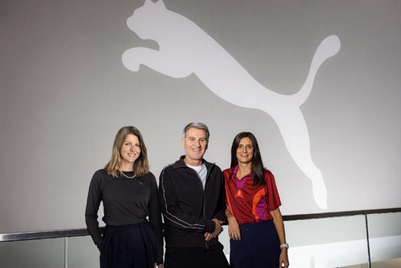
Manikas stressed the importance of the point of purchase when it comes to transforming human behaviour in a session titled "Igniting the consumer’s decision journey" on the final day of Spikes Asia 2012.
“You’ve got to care that retailers are brands and they control the environment in and around them,” she said. “The shopping moment is happening earlier and faster thanks to multimedia engagement.”
Manikas offered key tips and examples to brand owners to change behaviour and break through consumption barriers:
Make the benefit or the pain immediate – Manikas offered an example from sportswear giant Puma in Brazil. Instead of doling out regular discounts, Puma made things a little more interesting by offering consumers greater discounts if they spent less time shopping. For instance, buying something in three minutes fetched consumers a 20 per cent discount versus a 5 per cent discount if they spent 10 minutes shopping.
Finding a villain or borrowing a solution – Taking a campaign from the region, Manikas called Australia’s Tontine pillows campaign “brilliant.” This campaign introduced an expiry date on its pillows, so consumers would know when to think about buying new pillows.
Make it vivid – Here, Manikas took an example of a carrot farming company that took baby carrots and turned them into something sexy. The company packaged its products like junk food and sold them across the vegetable section and snack sections of stores. It also included vending machines. In no time, she said, the company’s sales spikes 12 per cent.
Leveraging social proof – Taking another example from Brazil, Manikas talked of fashion retailer C&A, which showcased its wares on Facebook and allowed the "likes" on its products to be displayed on in-store items, helping shoppers decide whether they wanted to purchase a particular outfit or not.
Make it easy and be useful – This is where technology plays a big part, Manikas said. She took the example of health care brand Robitussin, which launched a relief finder application tool that helped consumers identify what medication they needed to take for their ailments.


+(900+x+600+px)+(3).png&h=334&w=500&q=100&v=20250320&c=1)

.jpg&h=334&w=500&q=100&v=20250320&c=1)




+(900+x+600+px).jpg&h=334&w=500&q=100&v=20250320&c=1)
.jpg&h=334&w=500&q=100&v=20250320&c=1)

.jpg&h=268&w=401&q=100&v=20250320&c=1)

.jpeg&h=268&w=401&q=100&v=20250320&c=1)

.jpg&h=268&w=401&q=100&v=20250320&c=1)


